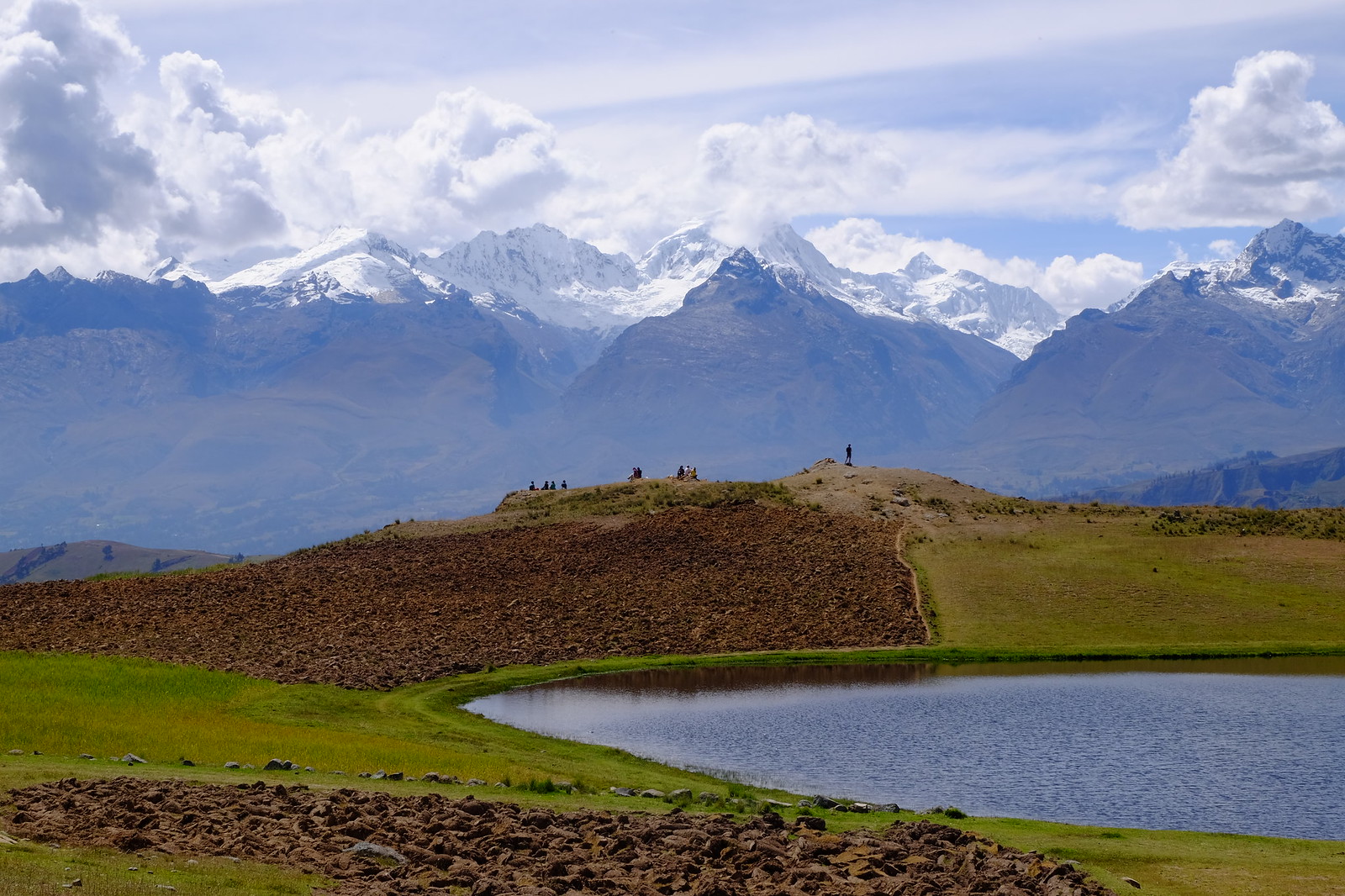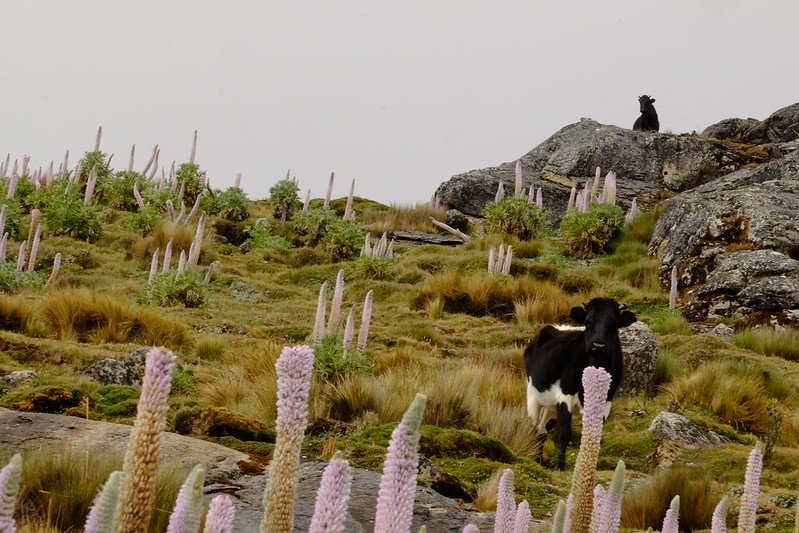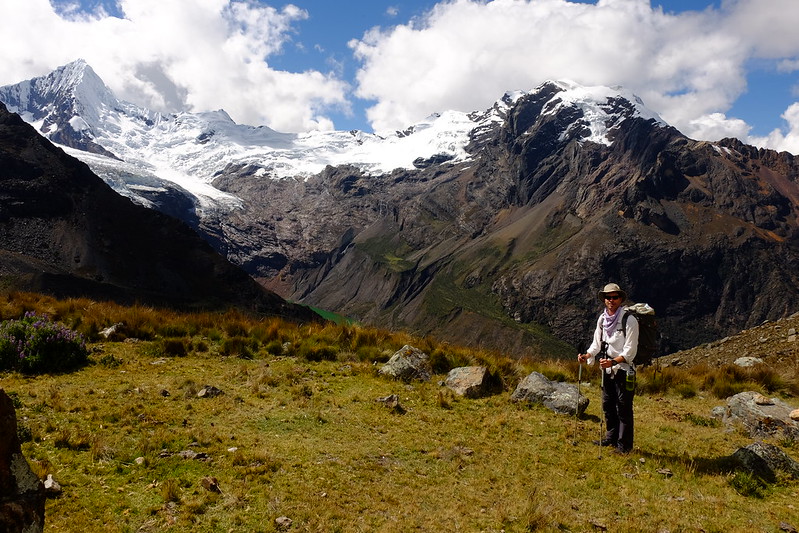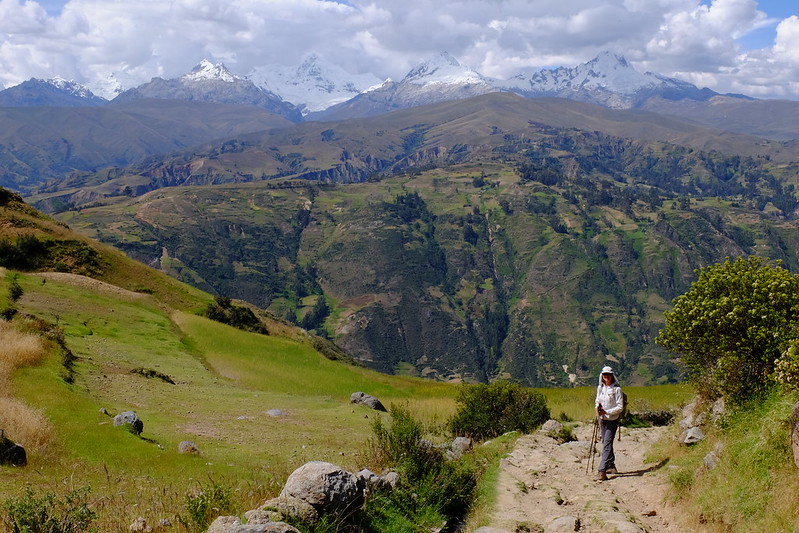After soaking in all the Incan culture we could, we flew from Cusco to Lima where we got on an overnight bus and headed to Huaraz, a town famous for mountaineering nestled between the Cordillera Blanca and the Cordillera Negra ranges in the Peruvian Andes, where we were determined to go on a proper backpacking trip. Before the sun went down as we were on the bus, we passed towering sand dunes along the Peruvian coast that caught us by surprise.
 The coastline looked like this for miles. It’s all sand, and you can see the tiny trucks in about the center of the photo.
The coastline looked like this for miles. It’s all sand, and you can see the tiny trucks in about the center of the photo.
There is no reason to go to Huaraz unless you hike or climb, but if you hike or climb and find yourself in Peru, you need to go to Huaraz. The town itself sits at over 3,000 meters, and we took a day to acclimate again and do a day hike into the Cordillera Negra before attempting to hike over passes well over 4,000 meters in the Cordillera Blanca.
 View of the Cordillera Blanca from the end of our hike in the Cordillera Negra.
View of the Cordillera Blanca from the end of our hike in the Cordillera Negra.
There are several multi-day treks one can do out of Huaraz. Although some treks can be done without a guide if you are an experienced hiker, most are guided, and most hikers use porters or donkeys to carry their food, tent, etc. There are some very popular multi-day treks, which we learned are popular because they were the first done by tourists, who then went home and recommended them. So they are popular because they are popular, not because they are the best. We heard tales of trashy tent sites and 20-donkey trains per group sharing the trails with you on the most popular trek, the Santa Cruz trek. We wanted a different scene, so we opted for a more isolated three-day/two-night trek that was recommended as being spectacular and without the crowds.
 The first valley we hiked through
The first valley we hiked through
Because of the high elevation and the fact that it is literally impossible to get light, backpacker-style food in Huaraz other than ramen noodles (and who wants to eat ramen every meal for three days), we wanted to hire a porter to carry the weight. We were at serious elevation after all. We were strongly encouraged to hire a guide as well, so we did. In the end, we didn’t need the guide, but he was a nice guy and spoke English so he was nice company. Our porter was a 60-year old man named Alejandro who had been a porter for 40 years, including on the most challenging mountaineering trips the region had to offer. He only spoke some Spanish, and spoke Quechua, the language of the Incans, fluently. He carried over 60 lbs. of gear and food on our trip, and said that was light. He also hiked faster, with that weight, than either of us, who were each carrying no more than 15 pounds and chewing coca leaves constantly. In fairness to us, Alejandro did not turn down the coca leaves we offered him either. He wore an unusual hat, a style we hadn’t seen before in Peru where everyone — men and women alike — wears a hat, so I asked where he got it. Turns out he was a porter for a group from Italy on a very challenging mountaineering trip some years ago, and they gave him the hat at the end of the trip. He only wears it in the mountains. When he gets home from the mountains, he puts it in a special place and puts on another, more locally flavored hat. We gave him a little carabiner for his water bottle at the end of the trip, which he really seemed to appreciate, but we doubt he will keep that in a special place!
 Sixty-year old Alejandro on the right with his Italian mountain hat at our first night’s campsite. It was just about to begin sleeting.
Sixty-year old Alejandro on the right with his Italian mountain hat at our first night’s campsite. It was just about to begin sleeting.
The hike was in the Huascaran National Park, a UNESCO World Heritage Site, and took us up one valley, over a 4,600+ meter (15,000+ feet) pass, and back down the valley on the other side. Given that it was in a national park, we were surprised to see dairy cows in the valleys, but apparently that is the norm in all the national parks of Peru. Due to this, we saw no wildlife other than a few birds. The water in the rivers also has to be boiled because of the contamination from all the cows. Despite that, it was gorgeous, and we only saw 2 other hikers the entire time. We slept both nights at 4,400 meters, and we found out that our 20-degree F rated down sleeping bags are not really enough for 20 degrees, maybe closer to 35. It was chilly.
 Me on the right, looking back at what we had come up and being soooo glad to be done with the ascent. This is the 4,600+ meter pass.
Me on the right, looking back at what we had come up and being soooo glad to be done with the ascent. This is the 4,600+ meter pass.
It was a spectacular route through some very beautiful country. We were even treated to some alpenglow, which is always awesome to see. This last adventure ended our trip in Peru, and for all practical purposes our time in South America. All good things come to an end, and thus it was time to move on to the land down under.
 There are seven kinds of lupine in the cow-inhabited park.
There are seven kinds of lupine in the cow-inhabited park.
For more, click through the below:
















2 replies